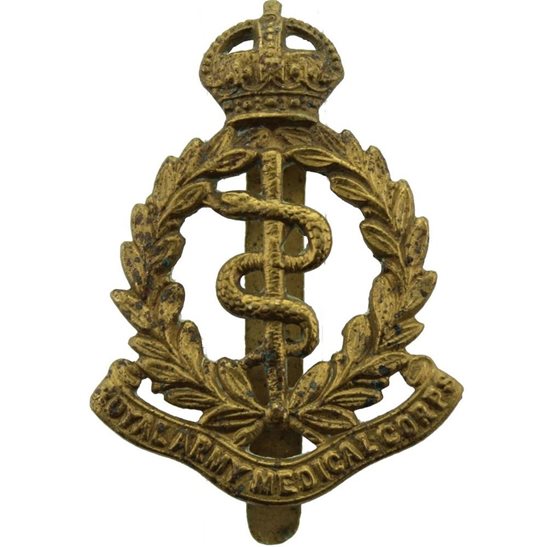Personal Details
Born: 2 June 1893.
Family: The fourth child of Thomas and Agnes Susan Eaton of Ellesmere House, Whitchurch, Shropshire. Leonard married Eva Florence Oliver on the 2 September 1920 and together they had 2 children – Dorothy and Peter.
Residence: In 1901 Ernest was living with his family at 16 Richmond terrace, Station Road, Whitchurch. When he joined the army in 1914, he was living at Ellesmere House, to where he returned after demobilisation. In 1939 he and his wife were living at 29 Broad Street, Newtown and Llanwchaiarn, Montgomeryshire, Wales and when he died he was living at White Oaks, Deganwy Road, Llandudno, Gwynedd, Wales.
Civilian Occupation: After leaving school he followed in his father’s footsteps and worked in a tailor’s shop and eventually became a Master Tailor.
Died: On 28 August 1974 aged 81.
Other Information: We know Leonard visited Canada in 1957.
Military Details
Regiment: Royal Army Medical Corps
Rank: Private
Service Number: 587 (previously 50324 and 350329)
Date of Enlistment: 5 December 1914
Date of Discharge: 31 March 1920
Reason for Discharge: Demobilisation
Leonard was awarded the Campaign Medals (British War Medal, and Victory Medal).

The British War Medal (also known as 'Squeak') was a silver or bronze medal awarded to officers and men of the British and Imperial Forces who either entered a theatre of war or entered service overseas between 5th August 1914 and 11th November 1918 inclusive. This was later extended to services in Russia, Siberia and some other areas in 1919 and 1920. Approximately 6.5 million British War Medals were issued. Approximately 6.4 million of these were the silver versions of this medal. Around 110,000 of a bronze version were issued mainly to Chinese, Maltese and Indian Labour Corps. The front (obv or obverse) of the medal depicts the head of George V. The recipient's service number, rank, name and unit was impressed on the rim.
The Allied Victory Medal (also known as 'Wilfred') was issued by each of the allies. It was decided that each of the allies should each issue their own bronze victory medal with a similar design, similar equivalent wording and identical ribbon. The British medal was designed by W. McMillan. The front depicts a winged classical figure representing victory. Approximately 5.7 million victory medals were issued. Interestingly, eligibility for this medal was more restrictive and not everyone who received the British War Medal ('Squeak') also received the Victory Medal ('Wilfred'). However, in general, all recipients of 'Wilfred' also received 'Squeak' and all recipients of The 1914 Star or The 1914/1915 Star (also known as 'Pip') also received both 'Squeak' and 'Wilfred'. The recipient's service number, rank, name and unit was impressed on the rim.

